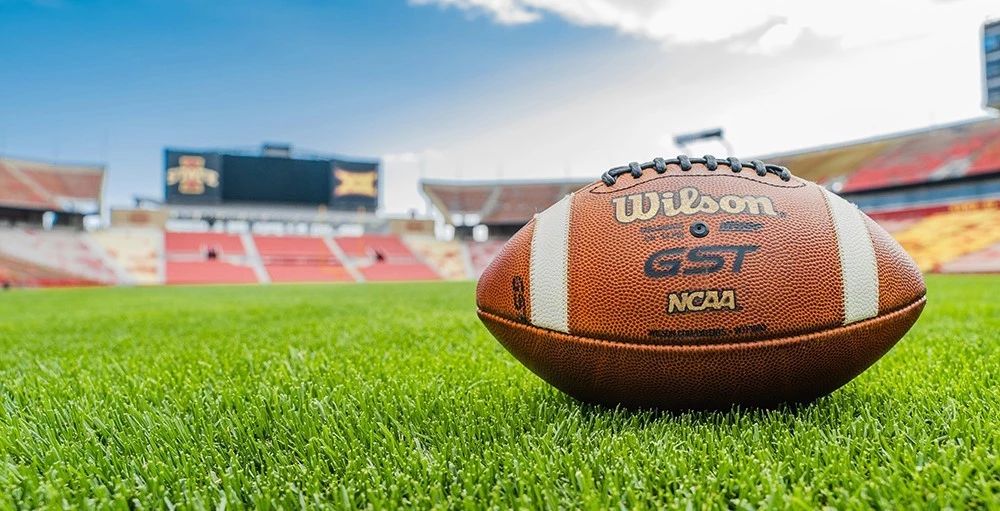With the average cost of a college education nearly doubling in the past 30 years, it is no wonder that today’s average student will take out more than $35,000 in student loans to cover that expense1, or that 44 million Americans now owe an all-time high of $1.6 trillion in student debt.2
Unfortunately, paying off these loans has gotten more and more difficult over the past three decades.
As tuition rates increase more than seven times faster than wages3, today’s graduate must work well over 4,000 hours to pay off the debt, twelve times longer than their parents.
For some groups of borrowers—women and those with lower incomes—paying off the debt while meeting necessary living expenses is impossible, often leading to loan default.
Recent statistics released by the Department of Education’s Office of Federal Student Aid seem positive:4
- Default rates are down two years in a row
- Default rates are down by 4.7 percent since the crisis came to a head in the 2009-2010 school year
- Only 10.1 percent of those who finished or dropped out of college during the 2015-16 school year defaulted by September 2018
- 100,000 fewer students default each year for the last two years
Unfortunately, these statistics do not tell the whole story.
Here are four things to understand about the lower default rate and why these numbers may be misleading:
1. Fewer Students Attending For-Profit Universities
According to the same Department of Education report, the default rates for proprietary colleges didn’t change substantially in two years, dropping just 0.4 percent but still remaining over 15 percent.
During this same time, the number of students graduating or dropping out of for-profit colleges and universities has shrunk 21.2 percent from 1.25 million students to 985,000 students.
So, although the percentages stayed the same, the numbers look better because there are fewer students.
2. Strong Job Market
The average weekly wage (adjusted for inflation) for American workers with a bachelor’s degree between 2016 and 2018 increased5 from $1,193 to $1,324, or $6,812 per year.
During that same time, the unemployment rate dropped6 from 3 percent to 2 percent for the same group.
CHMURA Economics and Analytics found that these two economic variables have a large effect on student loan default rates.7
By looking at default rates by state and comparing them to these two variables, they found that education institutions located in higher-wage states have lower default rates.
Additionally, they found a correlation between higher wages and job security, since most high wage jobs are in high demand.
3. Lower Community College Enrollment
A 2015 study conducted by the American Association of Community Colleges discovered that only 17 percent of community college students take out student loans, which is significantly less than the 48 percent of students at four-year public schools, 60 percent at private colleges and 71 percent at proprietary institutions.8 Nevertheless, these students default at a much higher rate.
The findings revealed that those who take on student debt without achieving a degree or certificate are far more likely to default.
The dropout rate among community college students is much higher than four-year colleges because these schools tend to serve a poorer student base and have an open-door admission policy.
Fewer students are using the community college system in the past two years as the economy has gotten better.
Rather than take classes in hopes of improving their ability to find a job, they moved directly to the labor force without the need for taking on student loan debt.
Once again, when there are fewer borrowers, there are fewer defaults.
4. More Income-Based Repayment Plans
Since 2009, student loan borrowers have had the ability to convert their loans to an income-based plan.
However, they are just now becoming popular.
There are many benefits to the borrower when they convert the loan, such as:
- Pay less per month: Loan payments are typically 10 to 20 percent of their income
- Balance is forgiven after 20 to 25 years
Plus, those that are unemployed will not have to make any payments and those that are less than gainfully employed will not be required to make monthly payments equal to the original loan schedule.
While on this plan, their loan shows that they are in good standing.
This is great news for the borrower since defaulting on a loan can hurt their credit, keep them from buying a home and even prevent them from taking certain jobs.
However, these plans skew the data.
Students who would have been in default are hidden from view, making it more difficult to determine the problems associated with student loan lending practices or determining the true nature of the student loan crisis.
The Solution: Student Loan Debt Letters and Financial Wellness Education
In order to combat student debt, many states have started requiring regular notifications to college students educating them about their current student loan balances and projected payments.
These student loan debt letters typically go out each semester, and can be delivered via email or regular mail.
Student financial wellness programs can help reduce default rates by teaching students about student loans and their consequences before they choose to borrow money.
A report by the Financial Literacy and Education Commission shows that students often do not know what they are getting into when they take out a loan.
They also don’t understand that certain actions that stop a loan from going into default doesn’t stop the interest from growing.
iGrad provides students with:
- Information on student loan interest and repayment
- Tracking tool to see how student loans will impact them once they start repayment
- Alternatives to taking student loans
- Personal finance topics such as budgeting and credit card debt that will help them stay financially healthy even if they determine a student loan is necessary to obtain their education.
By providing a financial wellness program, you can help your students make the right decisions about student loans to prevent detrimental long-term impact.
Read our full report on student loan debt & financial wellness
1 - https://www.experian.com/blogs/ask-experian/state-of-student-loan-debt/
2 - https://www.nerdwallet.com/blog/loans/student-loans/student-loan-debt/
3 - https://fred.stlouisfed.org/series/MEHOINUSA672N
4 - https://ifap.ed.gov/eannouncements/092519CDRNationalBriefingsFY16.html
5 - https://fred.stlouisfed.org/series/LEU0252918500A
6 - https://fred.stlouisfed.org/series/LNU04027662
7 - http://www.chmuraecon.com/blog/2018/april/02/upceachmura-study-exploring-the-determinants-of-student-loan-default-rates/
8 - https://www.washingtonexaminer.com/red-alert-politics/acct-study-students-borrow-less-likely-default








